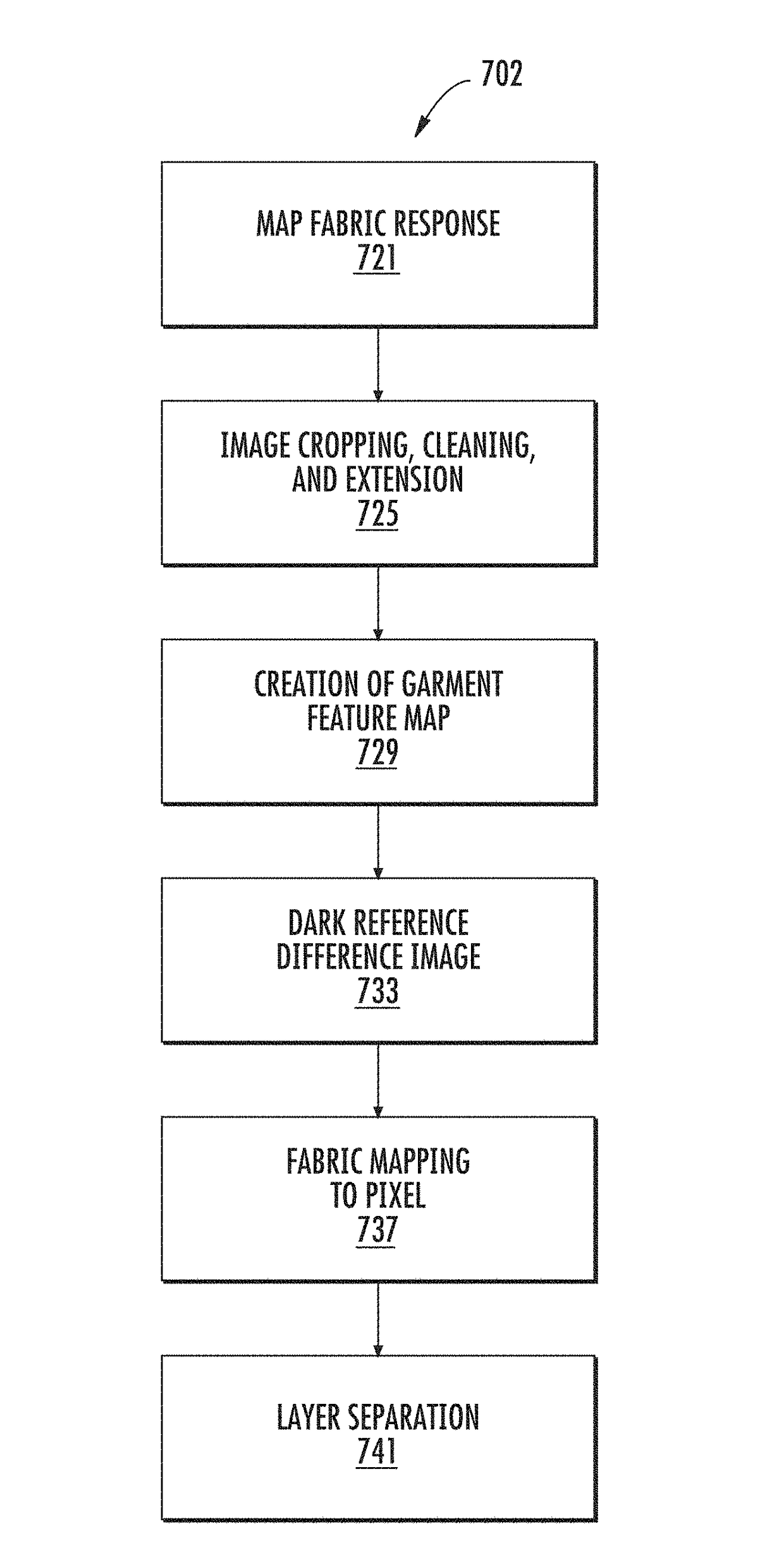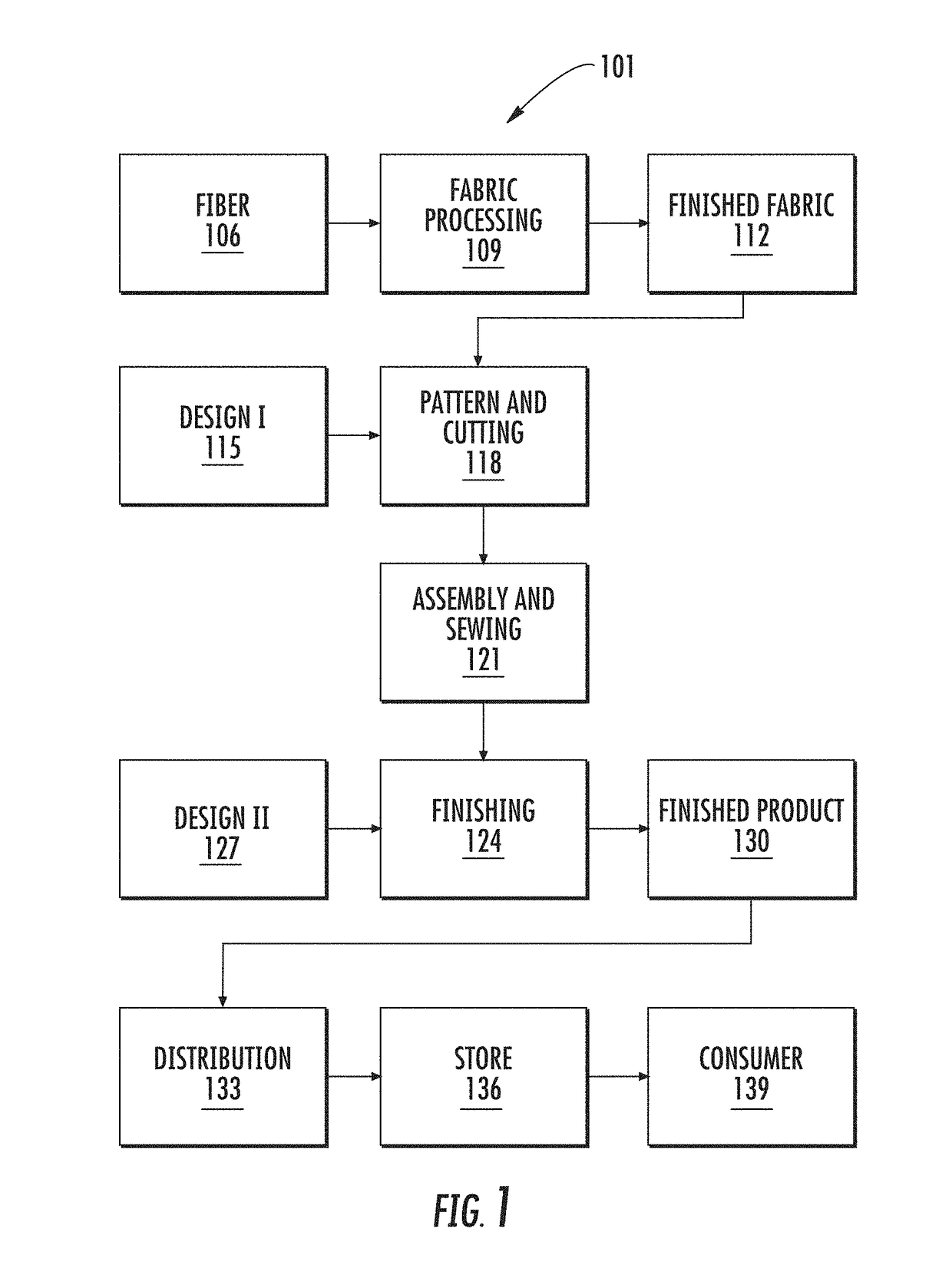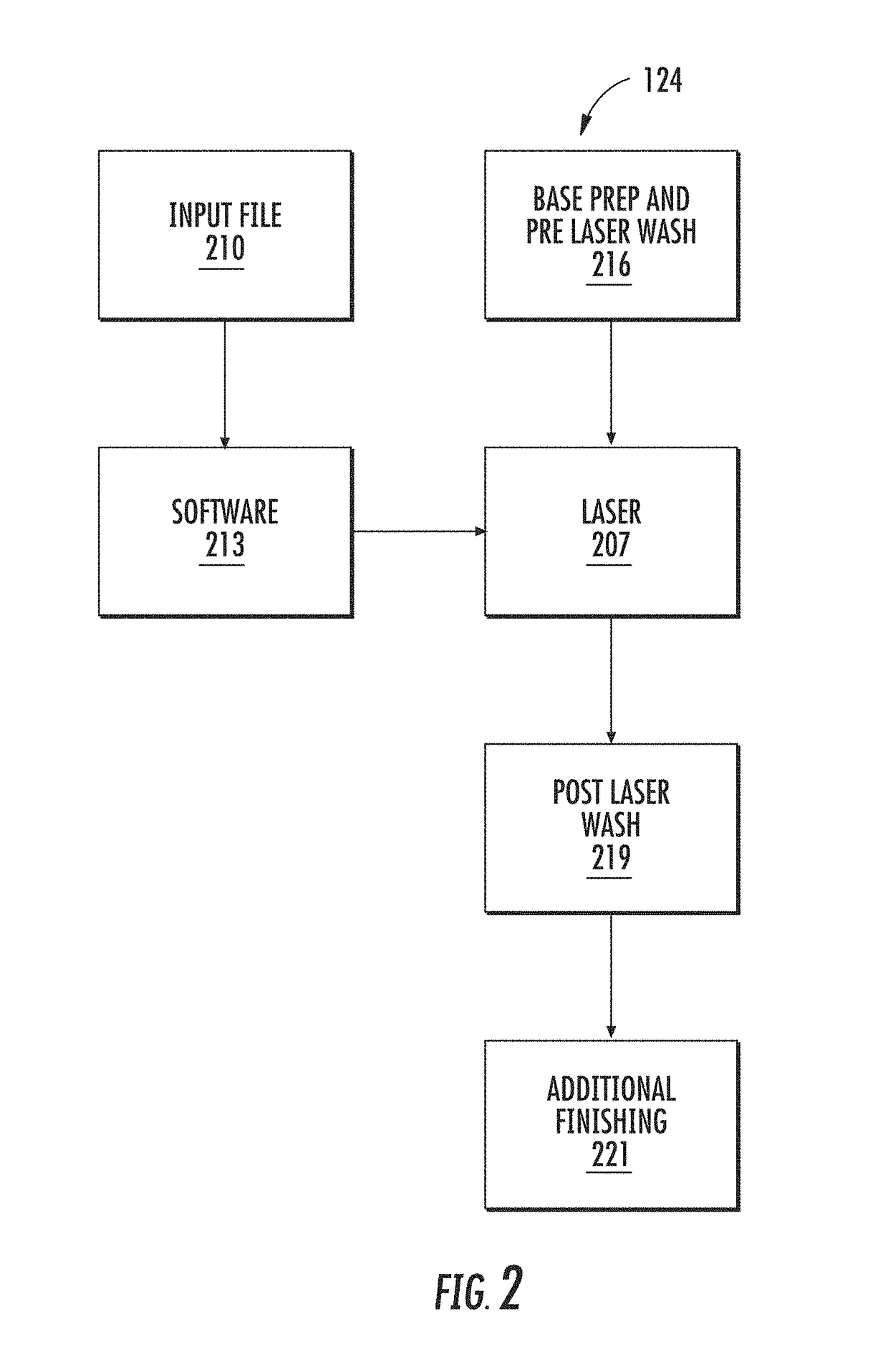Laser Finishing System for Apparel
a technology of laser finishing and apparel, applied in the field of apparel finishing, can solve the problems of affecting etc., and achieves the effects of reducing the cost of production, and reducing the quality of garments
- Summary
- Abstract
- Description
- Claims
- Application Information
AI Technical Summary
Benefits of technology
Problems solved by technology
Method used
Image
Examples
Embodiment Construction
[0041]FIG. 1 shows a process flow 101 for manufacturing apparel such as jeans. The fabric or material for various apparel including jeans is made from natural or synthetic fibers 106, or a combination of these. A fabric mill takes fibers and processes 109 these fibers to produce a finished fabric 112. Some examples of natural fibers include cotton, flax, hemp, sisal, jute, kenaf, and coconut; fibers from animal sources include silk, wool, cashmere, and mohair. Some examples of synthetic fibers include polyester, nylon, spandex or elastane, and other polymers. Some examples of semisynthetic fibers include rayon, viscose, modal, and lyocell, which are made from a regenerated cellulose fiber. A fabric can be a natural fiber alone (e.g., cotton), a synthetic fiber alone (e.g., polyester alone), a blend of natural and synthetic fibers (e.g., cotton and polyester blend, or cotton and spandax), or a blend of natural and semisynthetic fibers, or any combination of these or other fibers.
[004...
PUM
| Property | Measurement | Unit |
|---|---|---|
| frequency | aaaaa | aaaaa |
| frequency | aaaaa | aaaaa |
| color | aaaaa | aaaaa |
Abstract
Description
Claims
Application Information
 Login to View More
Login to View More - R&D
- Intellectual Property
- Life Sciences
- Materials
- Tech Scout
- Unparalleled Data Quality
- Higher Quality Content
- 60% Fewer Hallucinations
Browse by: Latest US Patents, China's latest patents, Technical Efficacy Thesaurus, Application Domain, Technology Topic, Popular Technical Reports.
© 2025 PatSnap. All rights reserved.Legal|Privacy policy|Modern Slavery Act Transparency Statement|Sitemap|About US| Contact US: help@patsnap.com



